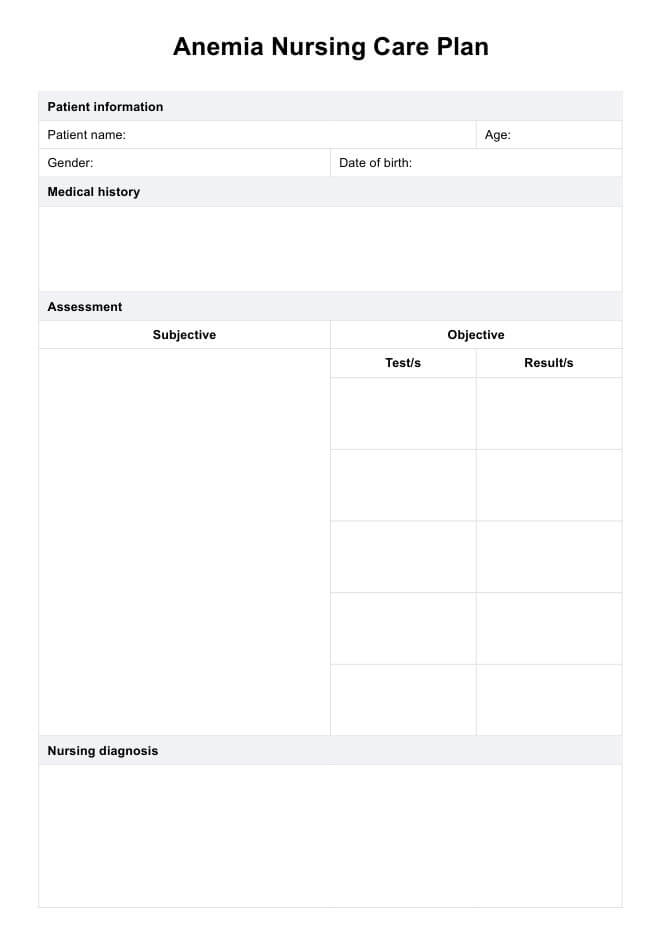Caring for a patient with iron-deficiency anemia involves a comprehensive approach that includes assessing the patient's symptoms, dietary habits, and medical history. Key interventions include educating the patient about iron-rich foods, monitoring hemoglobin levels, and adherence to prescribed iron supplements. Regular follow-ups are also crucial to assess the patient's response to treatment and adjust the care plan as needed.

Anemia Nursing Care Plan
Download our Anemia Nursing Care Plan Template to streamline how you provide care for patients with anemia.
Anemia Nursing Care Plan Template
Commonly asked questions
The standard of care for anemia includes a thorough evaluation to determine the underlying cause, which may involve blood tests, dietary assessments, and medical history reviews. Ongoing monitoring of blood counts and patient symptoms is essential to ensure effective management and resolution of the anemia.
A common nursing diagnosis of iron deficiency anemia is "fatigue related to decreased hemoglobin levels as evidenced by patient report of weakness and lethargy." This diagnosis reflects the patient's experience of fatigue due to insufficient iron, which leads to reduced hemoglobin production and, consequently, decreased oxygen delivery to tissues.
EHR and practice management software
Get started for free
*No credit card required
Free
$0/usd
Unlimited clients
Telehealth
1GB of storage
Client portal text
Automated billing and online payments











